Students from a US based MA course recently asked me why NGOs put too much emphasis on shocking statistics and pictures of girls only while boys from poor and conflict affected countries were also disadvantaged? “Why discriminate” they asked? It dawned on me that to one not caught up in the debates, or one witnessing or living the reality of the girls “plight” in Africa and other parts of the world, there is need to project clear messages and actions on “why girls”?
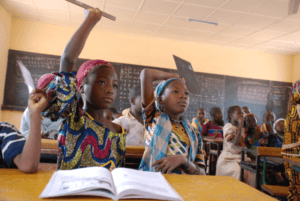
Classroom in Niger – Photo Credit: PLAN
This seems a good platform to do so. It is the 21st century, yet gender inequality in education remains an unresolved issue, as cyclical, intergenerational gender gaps persist. For decades, the narratives remain the same since time immemorial – Millions of school age girls not in school, many of those enrolled are highly likely to drop out without completing a full cycle of basic education, those who complete may never transit to the next level and if they do they are unlikely to achieve better learning outcomes. Did you for example know that in Western Sub Saharan Africa the gender gap in Education increased between 1970 and the mid 1990 and is greater now than it was in 1970? The key reasons –Gender blind education policies, systems and plans, few to no female teachers in conflict affected fragile states (CAFS) and rural areas, no schools close to homes, unattractive curriculum, male-bias, un-protective environments, poor gender budgeting to increasing hidden costs of education and other competing priorities for girls such as early marriage, domestic work and other social –cultural expectations and so on. If we’ve all along known this, then why are the messages and actions not persistently loud enough for upcoming generations to pick up and run with them? And if they are well projected, why are they not translated full scale into the desired results to end gender inequities in education? Could it be that long lasting solutions to these issues are yet to be invented and implemented accordingly?
On the surface it appears a lot is being done. Not a singe day goes by without a message on girl’s education and related issues popping up my computer screen. Alerting me of this girls project, that forum, this video, that report or new publication and so forth. The spotlight seems to be back on girls, as it dawns on many, including the UN, that none of the MDGs can be achieved without girls’ and women’s education. However, the messages appear mixed. Some, including the International Bank for Reconstruction and Development, and the World Development Report 2012, highlight progress towards gender equality, while others, such as the recent EFA Global Monitoring Report, indicate stalled education access and regression in education quality resulting in appalling learning outcomes. In 2012 alone, International agencies and related campaigns have published numerous reports describing and drawing the attention to the plight of girls. From calling attention to the 1.5 Million 15 year old child brides likely to miss education to “39 Million 11-15 year-old girls out of school”, the majority of these living in Conflict Affected Fragile States (CAFS). On the other hand, optimists, such as the World Bank, indicate that gender inequalities are dwindling as women close in on men in basic education, work and survival rates. The fact remains, whether girls education is improving, stalling or getting worse, much more needs to be done now than ever before to eradicate these malignant inequalities once and for all.
To me, the quagmire is exacerbated by a) Apathy amongst most leaders at all levels about changing the girls’ situation. To this day the rights of women and girls are often seen as a “nice to have” rather than a “must have”, by decision makers in policy, b) lack of persistent girl’s education actions closely knit and linked from decade to decade, with no breaks in between, c) no clear messaging at global level in unison targeting each level –individuals, communities, states and global to end discrimination against women and girls, d) no concerted efforts to coordinate plans and actions that directly conquer the already well articulated issues by putting beautiful reports into action and e) too much focus on numbers/quantitative targets.
Surely how will the world ever achieve gender equality with so many loose ends left unattended?

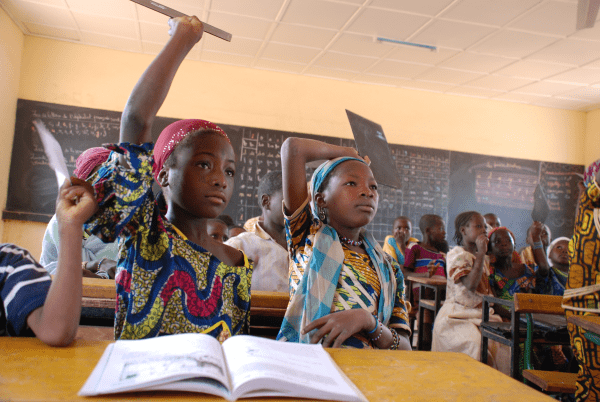
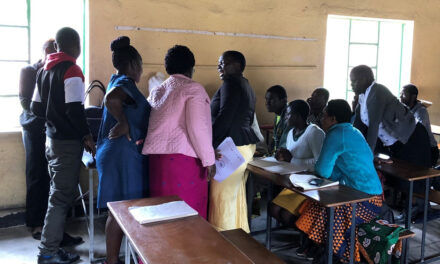
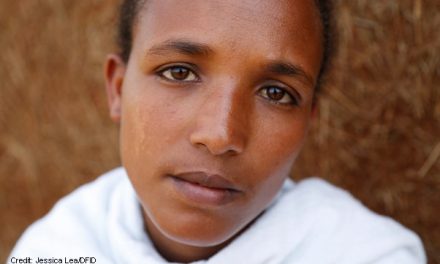
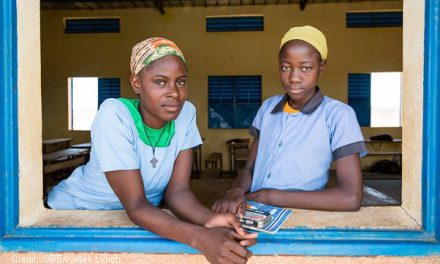
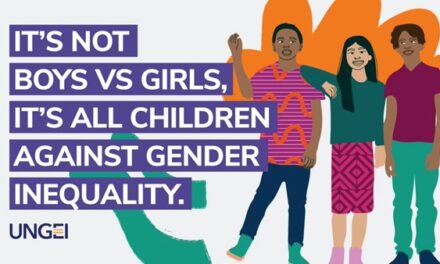
The article is a critical reminder that our efforts in girls’ education and women’s empowerment is far from done in the conflict zones.
Keep up the good work!
This is a good article and yes indeed girls education is top priority and a must have rather than nice to have. However I wonder where the boy child is in all of this. I dont know if this is related to education or equality or socialization but more and more I feel as if the boy child is struggling to find his place. For example in many communites around me, the educated girls will seem more proactive than the educated boys
Dear Mukuhi Macharia,
Thanks for your valuable comments on girls and questions about boys education. True that a growing number of girls are increasingly becoming proactive, especially in certain pockets of countries that have formulated and implemented good gender policies all round. That’s a great achievement! However this leads us to ask more questions, to conduct further analysis and text these observations to ascertain the degree and magnitude of the changes we see around us, which might appear huge locally but minor in wider country, regional and global contexts. We could ask for example, whether this phenomenon would be observed on majority of girls and boys in the entire country where you live or it is only in urban settings, or in families above a certain income threshold. To what extent would this be observed in conflict affected countries and in rural areas where girls face multiple barriers to education than boys due to factors highlighted in the article? A lot of research on this has been done and made available in the internet. It is however a reality and an interesting phenomenon you raise on the effect of girls proactive ways on that of boys. One that I would like to open up for further debate…
Emily,
A great article that reminds us of the relevance and persistence of gender inequalities in education. In relation to your last point in particular, and the over-emphasis on numbers, I’d love to hear your comments on my thoughts on this at:
http://www.ukfiet.org/cop/2012/transforming-girls-education-how-do-we-advance-measurements-of-success/
Emily, really stimulating an thought provoking article! Thanks for sharing:-)
Two very amateur questions:
1) Why are organisations like world bank giving the impression that the problem is close to being solved? Is it a glass half full issue or is there a hidden agenda?
2) What are the success stories, in which contexts and why? What was the key driving force? Is it increased community consciousness?
Would be wonderful to hear your comments.
Keep it up!
Nidhi
Reality has it that, if a boy child suffers due to social up evil in a society, it’s even worst for a girl child and that is precisely why we should work hard to attain gender quality.
Schools in most African countries are not girl-friendly and girls often suffer sexual harassment, bullying, and other forms of intimidation sometimes even rape. These abuses often meet with silence and inaction on the part of authorities. My experience has showed that positive interactions between teachers and students almost equally divided between boys and girls in the early years of schooling, by the fifth grade teachers considerably more positive towards boys than girls, spending more time on the former. This tends to perpetuate the already low self-esteem of many young girls. Teachers habitually use biased languages and sometimes obnoxious words which reinforce distinctions and dropout. This situation is aggravated by limited facilities like toilets and water. Lack of such services for boys is an inconvenience but for girls it’s next to “midnight madness” especially when facilities are not serviced and maintained. Facing the onset of puberty, and with it the realities of menstruation in a school where there is no latrine, no water, no hope of privacy other than the shadow of a bush, and no girlfriends with whom to commiserate. In some of the region’s rural communities, menstruation itself is so taboo that girls are prohibited from cooking or even banished to the countryside during their periods.
That impact is substantial. Researchers throughout sub-Saharan Africa have documented that lack of sanitary pads, a clean, girls-only latrine and water for hand-washing drives a significant number of girls out of school. The United Nations Children’s Fund, for example, estimates that one in 10 school-age African girls either skip school during menstruation or drop out entirely because of lack of sanitation.
The pressure on girls to drop out peaks with the advent of puberty-this really happens on boys and the problems that accompany maturity, like sexual harassment by male teachers and male pupils and parental pressure to marry.
Rebels who use child don’t care whether it’s about she /he, they are treated same or even worst and good example is the Lord Resistance army in Northern Uganda. At least for a boy child soldier who is exposed to general suffering but a girl child solider is sexually abused by the commanders or boy child soldier, become pregnant and take care of the baby amidst being a soldier hence increasing the magnitude of the problem for girl’s child soldier.
Institutions are gendered bias and perpetuates gender violence.
Emily, Thanks a lot for provoking my thoughts.
Emily,
Thank you for the thought provoking article. I do agree with you that inequality in education remains unresolved and it may take some time before it is resolved. I also agree with you that the global figures(full of contradictions) gives a gloomy picture of girls education. I also concur that a lot has been documented about girls education and that is the reason that you get a lot of pop ups from your computer. However, we must also accept that little has been documented about the plight of boy child education. Most of the things we read about boys is either them being child soldiers or being used by the power to smuggle minerals and arms from one country to the other. The import is that there might be number of things happening to boys in education and are not yet documented. It will therefore be important for all of us to dig deep on what is currently happening to boy child education. The assumption is that boys are doing well in terms of access and participation globally. In my village, there are more girls in schools than boys. In my maternal uncle’s village there are more boys in school than girls. The question by the Master student needs to be answered from an informed position by looking at the regional, zone, country disparities. Macharia can we post something on boy child education? Thank you Emily. Keep the debate going
girls access (lack of it) to education is a pointer to greater fundamental problems of poverty … By trying to treat this symptom and ignoring fundamental issues we are bound to be counter productive as evidenced by rising trends of single parents majority of whom are women. Most measures aimed at girl child leave out men yet it evident that men who are educated and have jobs will take their kids whether girls or boys to school. It is also true that in the so called marginalised communities marked as ‘poor’ yet they have herds of livestock and land acreage worth millions. Unless players (govt, donors, NGOs, communities) start dealing with issues as systems we are bound to be running in circles.